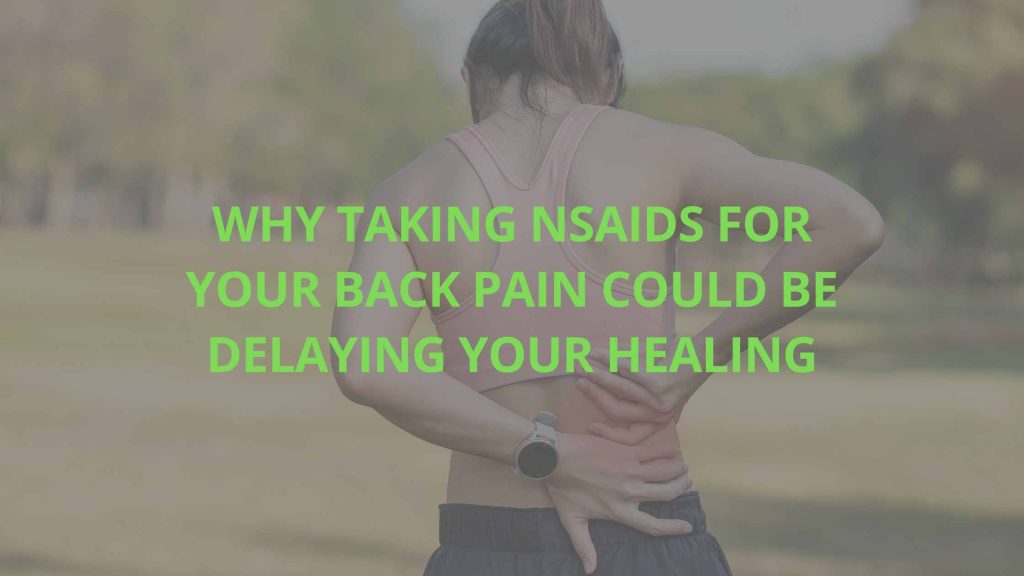Imagine grabbing that ibuprofen the second your back tweaks—only to realize it’s setting you up for years of nagging agony instead of sweet relief.
If you’re dealing with acute or chronic low back pain, NSAIDs like ibuprofen or naproxen seem like the go-to fix for inflammation and ache. But dig into the research, and it’s clear: these pills offer tiny benefits at best while potentially screwing up your body’s healing process, turning a temporary issue into a chronic drag. We’re talking minimal pain relief with a side of delayed recovery. Time to rethink that pill bottle and opt for smarter strategies.
The Shocking Truth: NSAIDs Barely Budge Back Pain
NSAIDs promise to crush inflammation, but studies show they’re more hype than help.
- A 2020 Cochrane review on acute low back pain found NSAIDs only reduce pain intensity by a measly 6.9 points on a 100-point scale compared to placebo, with low to moderate evidence quality (Cochrane Database Syst Rev, 2020).
- Another analysis pegged it at just 7.3% pain reduction over three weeks (Cochrane Database Syst Rev, 2016).
- For chronic cases, a 2016 Cochrane update revealed even weaker results—a 3.3-point drop versus placebo, based on low-quality evidence (Cochrane Database Syst Rev, 2016).
- Tthey’re no better than plain paracetamol for acute pain but come with more side effects (Cochrane Database Syst Rev, 2016). That’s not relief; that’s a rip-off.
How NSAIDs Hijack Your Healing and Fuel Chronic Pain
Inflammation? It’s your body’s repair squad, not the villain—yet NSAIDs shut it down, stalling recovery.
- Research from 2018 highlights how NSAIDs double the risk of healing disorders in bone injuries by messing with inflammation (J Bone Joint Surg Am, 2018).
- A 2024 BMJ piece explains they impair muscle regeneration, leading to weaker repairs and more scar tissue in musculoskeletal woes like back strains (BMJ, 2024).
- Even short-term use delays soft tissue healing, per a 2024 study on soft tissue injuries (J Orthop Res, 2024).
- Worse, they boost chronic pain odds: a 2022 AAAS report showed NSAID users had a 1.76 times higher risk of developing ongoing back pain (Sci Adv, 2022). The New York Times echoed this in 2022, noting nearly double the chronic risk (NY Times, 2022).
The Evidence Stacks Against Them
Don’t just take my word—science is screaming warnings.
- A 2017 study on eccentric muscle injuries found delayed NSAID dosing disrupts repair mechanisms (Am J Sports Med, 2017).
- Chiro.org notes NSAIDs theoretically delay musculoskeletal healing by blocking essential inflammation (Chiro.org, 2023).
- Mainline Spine warns minimizing NSAIDs aids healing, as they suppress needed inflammation (Mainline Spine, 2023).
It’s a trap: quick ease now means prolonged suffering later.
Ditch the Drugs: Real Ways to Beat Back Pain
Skip NSAIDs and embrace what actually promotes healing without the backlash.
- Go for exercise or muscle relaxants, which a 2022 Frontiers review found effective for acute low back pain relief and function (Front Pain Res, 2022).
- Acetaminophen handles symptoms safer, per multiple studies (Sci Adv, 2022). Or try heat and movement—let inflammation do its job.
Better yet, use tools like dry needling, acupuncture and prolotherapy to give the muscles and ligaments in your back a new opportunity to heal and regenerate.


